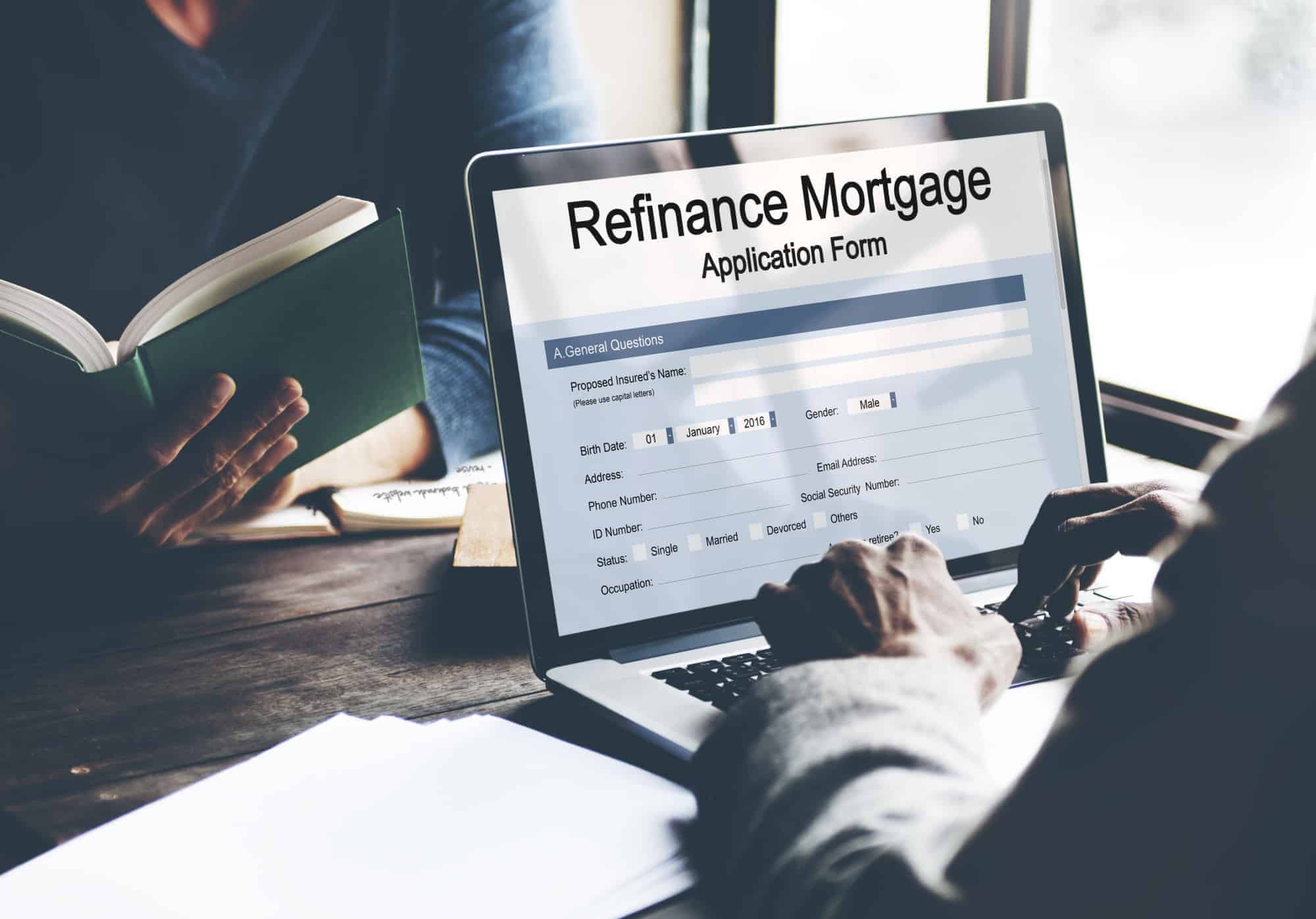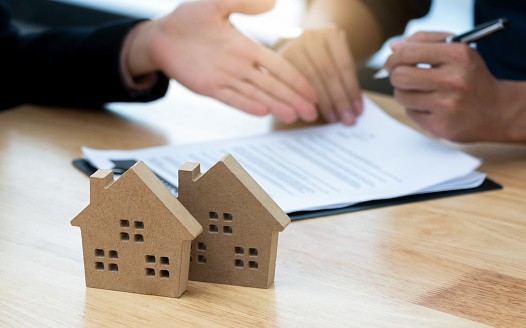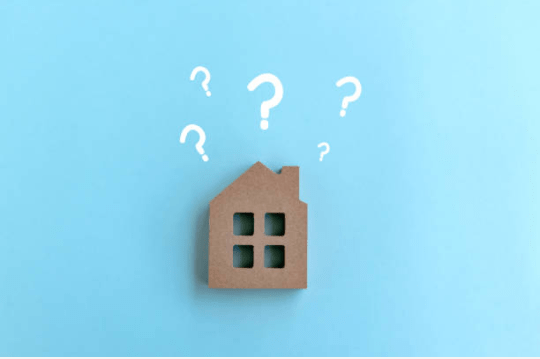If you’re looking to refinance your existing FHA loan, then you may want to consider an FHA Streamline. The FHA Streamline Refinance program helps borrowers refinance their current FHA loan more quickly and at a lower rate. It’ll also save you from having to fill out a lot of paperwork, and you most likely won’t even need an appraisal!
Interested in learning more? Continue reading and we’ll walk you through what you need to know.
What Is An FHA Streamline Refinance?
With an FHA Streamline Refinance, you can refinance your FHA-backed mortgages in a relatively short amount of time. And since the FHA has already valued your property, you won’t have to go through the FHA appraisal process again.
There are two types of FHA Streamline Refinance programs: non-credit qualifying and credit qualifying. With a credit qualifying streamline refinance, your lender will have to calculate your DTI (debt-to-income ratio), execute a credit check, and assess your ability to continue to pay your mortgage.
However, you won’t need those requirements with non-credit qualifying FHA streamline refinances. Cutting the extra documentation that comes with a credit-qualifying streamline refinance could mean you end up getting a lower interest rate.
You can only utilize the Streamline program if you’re already a homeowner who has FHA loans. With that said, you don’t have to refinance with your current lender. It’s best to compare quotes from multiple FHA streamline refinance lenders so that you can find the best option that works for you.
How Does an FHA Streamline Refinance Work?
The FHA Streamline works a lot like any other type of refinance program. This program is available as an adjustable or fixed-rate mortgage, it comes as a 30- or 15-year term, and you also don’t have to worry about any FHA prepayment penalties.
This program can’t be used to refinance a 30-year mortgage into a 15-year mortgage. However, you can use it to extend your 15-year mortgage into a 30-year one. When you do this, you’ll lower your monthly payment even more.
Also, the rates that come with the FHA Streamline Refinance are going to be the same as mortgage rates for a “regular” FHA loan. And there isn’t any penalty for having very little equity.
You can also do an FHA Streamline Refinance more than once. You just have to meet the guidelines set by the FHA. Continue reading to learn all about the requirements that you need to meet.
What are the Requirements for an FHA Streamline Refinance?
Considering that the FHA is currently insuring over 8 million mortgages, it’s easy to see why its primary goal is to reduce its risk in the overall loan pool. Because of this, the most important qualification standard is that homeowners who use the Streamline Refinance program need to have a perfect three-month payment history.
You’re allowed to have one late payment on your mortgage in the last twelve months. And at the time of closing, your loans need to be current.
The FHA also requires that homeowners need to make six mortgage payments on their current, FHA-insured loan. Also, in order to be eligible for a Streamline Refinance, 210 days need to pass from your most recent closing date.
You’ll also have to demonstrate that there is a net tangible benefit in your refinance. You can determine the net tangible benefit by reducing the “combined rate” by at least half of 1%.
Interestingly enough, you’re not required to verify your annual income or employment status. In order to get approval, you also won’t need to present any tax returns, W-2s, or paystubs. As long as you still meet the other requirements for the program, you can get approved while also being unemployed.
Credit scores are also not verified by the FHA for the Streamline Refinance program. Instead, your payment history will be used to determine your future loan performance. However, some lenders set their own credit score minimums.
What Banks or Lenders Offer an FHA Streamline Refinance?
There are banks and lenders all over the country that offer FHA Streamline Refinance. However, these lenders are not all created equal. Some lenders have minimum credit score requirements and others might have high lender fees.
A good lender will offer a digital application process and different mortgage options for low-income borrowers. They might also publish their rates online which would make research easier for the borrower.
Is An FHA Streamline Refinance Worth It?
With an FHA Streamline Refinance, you’re going to have to pay closing costs and mortgage insurance premiums. If you have a newer FHA loan, then you should expect to have higher annual premiums and upfront costs, which could also mean that your payments might go up.
Also, you won’t be able to finance your closing costs into the new loan. You’re going to have to make sure that you have enough money on hand to cover those costs. While some lenders might offer a no-closing cost loan, you could actually end up paying more in the long run.
An FHA Streamline Refinance may be a good idea for you if you’ve recently experienced a loss of income since you’re not required to verify your current income. And if you have less than 20% equity, an FHA Streamline Refinance could be cheaper than a traditional PMI.
It’s important to note that the FHA doesn’t allow a Streamline Refinance’s loan balance to increase in order to cover associated loan charges. The new loan balance is limited by a formula of “Upfront Mortgage Insurance Premium + Current Principal Balance.”
All other costs – escrow population, title charges, origination charges – will either have to be credited in full by a loan officer or paid by the borrower as cash at closing. The former option is known as “zero-cost FHA Streamline”.
Is An FHA Streamline Refinance a Good Idea?
When it comes to refinancing your home, an FHA Streamline may be the perfect option for you. However, due to its limitations, it’s not ideal for everyone.
An FHA Streamline Refinance offers you a lower interest rate, which could help to reduce the amount you pay on your monthly payments. This rate may be adjustable or fixed.
Also, you might experience lower closing costs compared with those that come with traditional mortgage programs. It’s worth pointing out that these closing costs need to be paid apart from the mortgage amount. Unlike standard mortgages that let the borrower roll closing costs into the mortgage amount, lenders aren’t able to do that with a Streamline Refinance.
Some lenders might offer products that actually work around this exclusion by charging higher interest rates and then using that money to pay for the closing costs of the transaction. Because of this, the borrow wouldn’t incur any costs at the start of the Streamline Refinance mortgage.
With all that said, the FHA Streamline Refinance program isn’t something that’s for everybody. As opposed to the traditional cash-out refinance mortgage, borrowers who use the FHA Streamline Refinance program won’t be able to receive extra money from the loan to use for expenses, like paying off credit cards, college tuition, and home renovations. In fact, homeowners are prohibited from taking more than $500 out of mortgages with the FHA Streamline Refinance program.
If your current FHA mortgage rate is higher than current rates, you could save a lot of money by going with an FHA Streamline. And if your home has negative or no equity, then you may want to FHA Streamline since you don’t need to verify your home’s value.
How Much Does the FHA Streamline Refinance Cost?
One big downside to an FHA Streamline Refinance is that you’ll pay a new upfront mortgage insurance premium. And you’ll continue to send out monthly premium payments.
The upfront premium is going to be 1.75% for loans endorsed on or after June 1, 2009.
When you have an FHA Streamline Refinance, you’re able to wrap your upfront mortgage insurance premium (but no other closing costs) into a higher loan amount as part of your refinance.
If you’re worried about covering the closing costs of an FHA Streamline loan, then you can consider a no-cost refinance. However, you’ll be charged a higher interest rate if you do that.
And remember that the “net tangible benefit” requirement means that the numbers need to work out in your favor when all costs are considered. You can determine if an FHA Streamline Refinance is right for you by calculating your long-term savings.
There are several refinancing options that are offered by the FHA. These include a cash-out refinance and a 203(k) refinance for renovations.
You’re probably going to have to crunch some numbers and do a fair amount of research until you decide which refinancing program will be best for your situation. You can also use a Refinancing Calculator to determine how much you could save by refinancing your mortgage.
Are There Closing Costs Associated With the FHA Streamline Refinance?
The closing costs that are associated with Streamline Refinances are similar to other mortgages. One big difference is that there is no appraisal fee (unless you choose to get one). You might have to pay for a portion of the insurance and property taxes at closing though.
Let’s look at one example. If you live in an area where the property taxes are due in a few short months, your lender will require that you pay that tax installment. However, it’s important that you keep in mind that you’ll get a check from your current lender for the insurance and taxes that you’ve paid on your current loan but haven’t been disbursed.
If you’re running low on money, then you can ask your lender if they have lender credits. With these credits, you’ll pay a slightly higher interest rate but can use the profits from the loan to pay for your closing costs. And if you have equity in your home, then you may be able to wrap closing costs into a new loan amount with an appraisal.
The Numbers
You can normally expect to pay anywhere between $1,000 and $4,000 in closing costs for an FHA Streamline. However, this amount may be lower or higher depending on what your loan amount is as well as other factors. You’ll also need to provide 60 days of bank statements that show you have enough money to cover any closing costs that are out-of-pocket.
Your loan officer is going to give you an estimate of the total funds that are due. This estimated out-of-pocket amount can increase throughout the mortgage process, however. You should be ready to give additional or updated bank statements in order to show that you have the funds necessary to cover the increased amount.
It’s important to remember that you have to provide all bank statement pages to your lender. Even the blank pages.
And make sure that your name, account number, and address are on your statements as well. You’ll need the PDF version or mailed version of your full statement since online bank printouts don’t include your personal information on them.
The Importance of Knowing all about FHA Streamline Refinance
In these uncertain times, we don’t know which direction our economy is headed in. Many homeowners are getting by on very thin margins. But by educating yourself on the different mortgage refinance options out there, including FHA Streamline Refinance, you can make the financial decisions that are best for you and your family.



